
University Test


SAFIERY UNIVERSITY
SAFIERY University guides you in the application of monitoring and switching technology. We share 35 years engineering experience in energy monitoring and controls – and 15 years in off-road and boating.

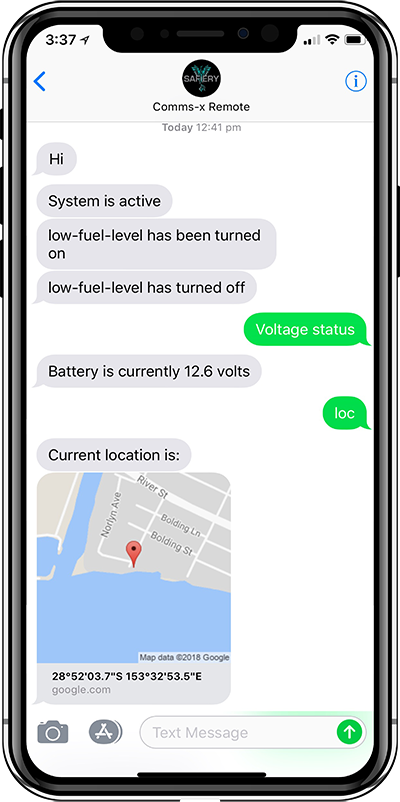
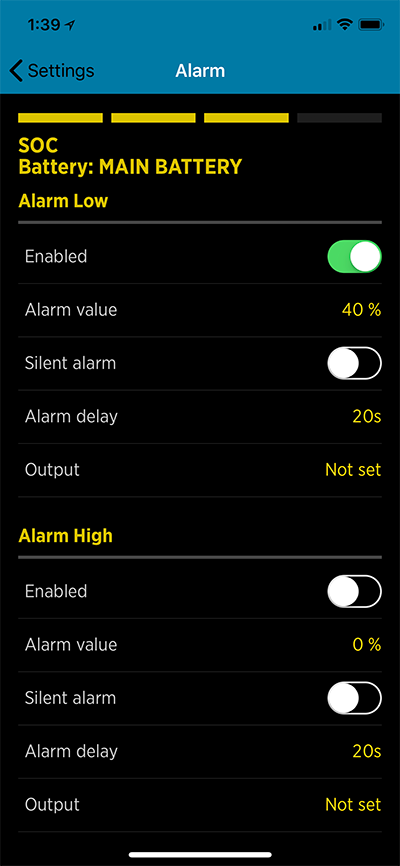
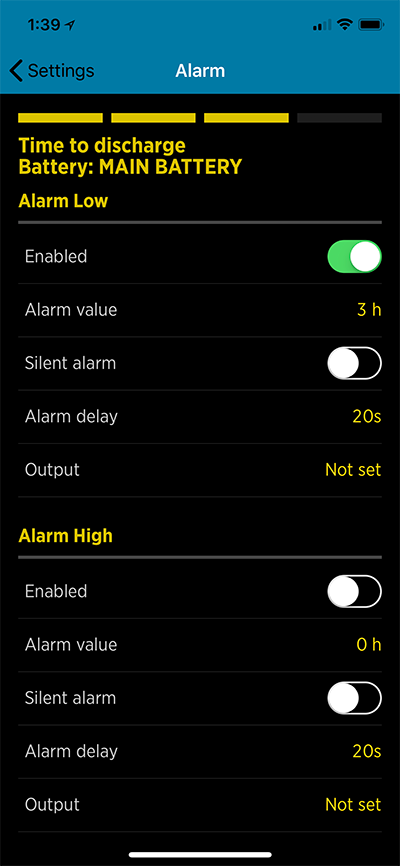
SATELLITE GPS MONITOR Plus Alarm package to notify by SMS and Google Maps…. Read the details here…

SAFIERY UNIVERSITY
VOICE AUTOMATION EASY AND CLEAR
This technical article is designed to give value to the reader through more knowledge on Voice Control for automation.





VOICE CONTROL IS NATURAL.
Voice commands are 3-4 times faster than keying in requests or searching. Digital devices and assistants can now react reliably to voice commands. In this application, the controller just has to “understand Query” and the software will action. In the table below, resuts are now 100% with Google Assistant.
For this reason, we are using that platform.
Google assistant can operate on Apple smartphones and iPads as well as Android devices.
However, there is no need to learn keyboard and screen interfaces to control them.
Effective Voice control and AI needs direct access to all the data and control devices. This is where the technology for RV’s in particular has been lacking.
Controlling water pumps, lights and heaters is done wirelessly.
You do not need to have internet access for the AI to simplify your life. One of the bug bears of camping is the flood of insects at sunset. The system will automatically change the colour of the outside lights at sunset when they are turned on. The rest of the time, they will be white.
Voice control interfaces can be:
Small mushroom speaker.
Smart display of 8in or 10in screen/speaker combo.
Apple iPhone or Android Phones or tablets
Smart watches and other wearable tech.
Making them controllable by voice eliminates the need for learning gestures or clicking through layers of menus to find the detail you want.
People are also getting used to controlling devices with voice, this means it no longer seems strange to talk to a computer. Voice will also give you secure access, as voice biometrics are being adopted as a security measure. And talking to a voice assistant doesn’t have to mean giving up all your privacy, with microphone mute buttons on every device and privacy assured.
A 2017 survey* found 72% of people who have smart home products want voice control.
Millennials (ages 18-34) are leading the voice control trend. 58 % of Millennials have smart home products and devices that already have voice control features. Compare this to 50% of Gen Xers (ages 35-54) and 26% of Baby Boomers (ages 55+).
Survey respondents believe voice control provides a more intuitive user experience and practicality: The most commonly cited benefits for using voice control among respondents were hands-free control at 30%, increased user-friendliness at 17% and flexibility in location at 14%.
Google assistant lets you access your RV Systems with voice control. “turn on outside lights” “set outside lights as yellow colour”
Step up to the smart display and see more information on the screen as you give voice commands.
Watch YouTube videos, Netflix, see the weather, and ask questions via “Ok Google”.
The smart display is minimalist in design.
Sit either horizontally or vertically, speaker included
Each comes with 4GB of internal storage, a 5MP camera, dual microphones, and a 10W speaker.
Volume button, mic on/off switch, camera on/off switch.
Display is crystal clear: 8-inch screen is high definition (1280×800) while the 10-inch screen is full high definition at 1920×1200.

SAFIERY UNIVERSITY
SIZING ENERGY SYSTEMS for RV’s (Boats follow)

120Ahrs quality Lithium Battery costs about the same as a quality solar system to produce 100Ahrs a day:
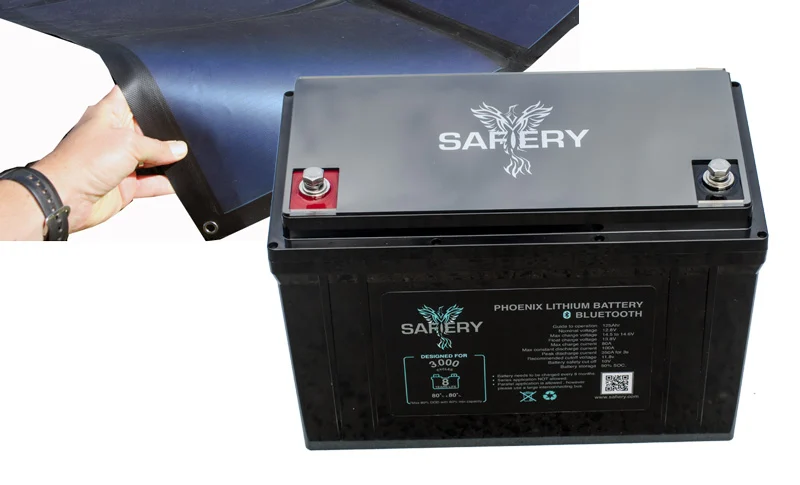
From 15 years assessing and talking with caravan travellers:
From several years assessing and working motor yachts:
Assuming the genset is running till sunset…
Assuming there is no genset on your yacht and you reply on wind generator and/or solar. Follow the caravan guidelines above assessing your

SAFIERY UNIVERSITY
MONITORING for LOSS of SITE POWER

Have you the frustration of a flashing “low battery alarm” only to find the 240V input had dropped out?
Its happened to me on both the boat and the caravan.

The solution is quite a simple one.
Monitor the 240V power inlet for loss of power.
Our 240V current sensor measures the AC current flowing in and displays the power in watts on the Pico.
Simply set the alarm at the lowest acceptable power level in watts.
If this is a large power boat with multiple power inlets, you can have each inlet monitored.
Each sensor is set for the maximum power input.
Order the AC current sensor with the Simarine system and select the current flow.
Bruce Loxton
SAFIERY

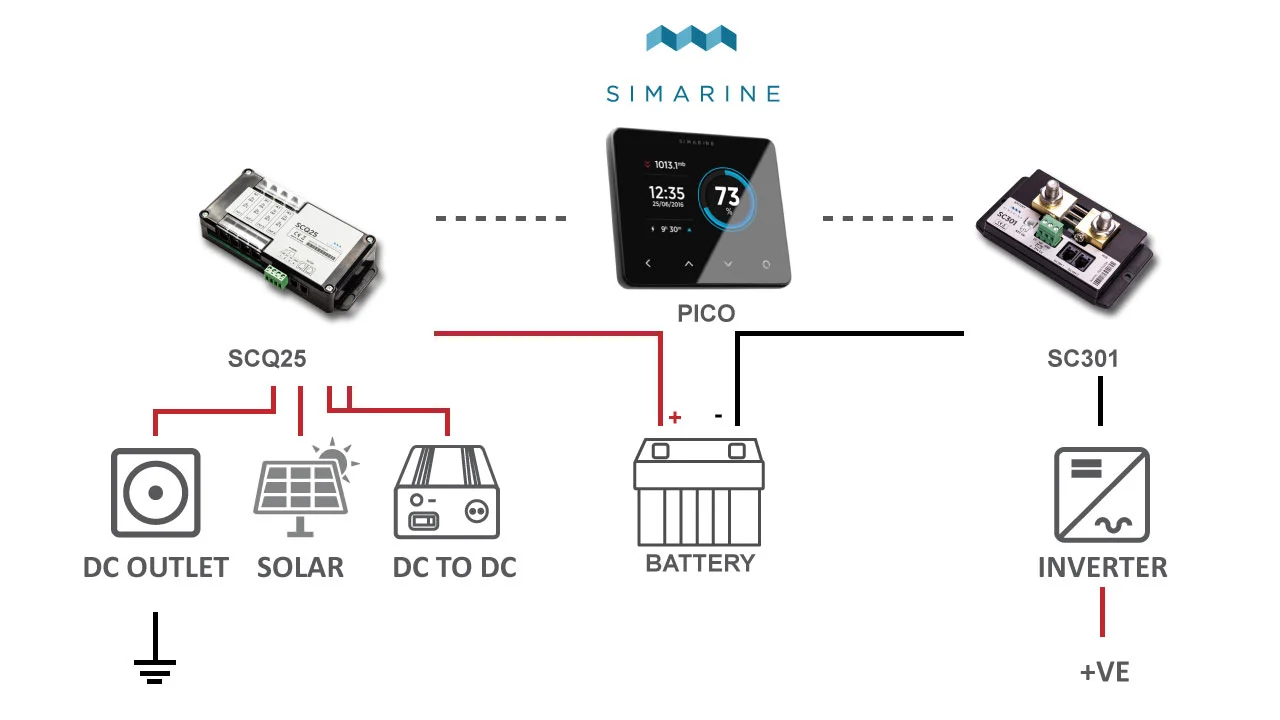
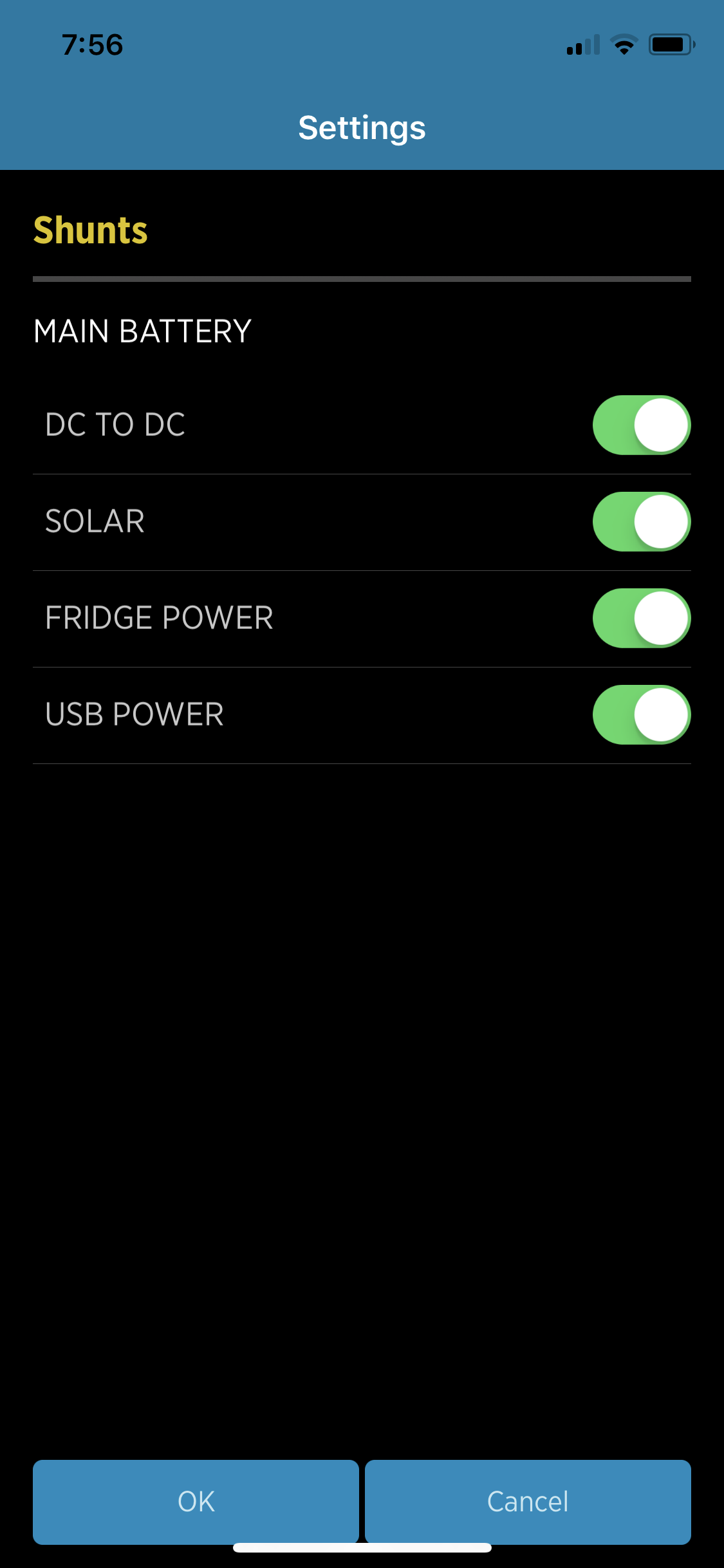

Have you installed multiple shunts on the negative side of the master battery bank?
I have seen up to 6 different shunts picking up power inputs and drains. They are typically installed just before the mast shunter on the battery.
This has its problems:
SIMARINE shunt devices:
Greatest Feature:
Benefits are:

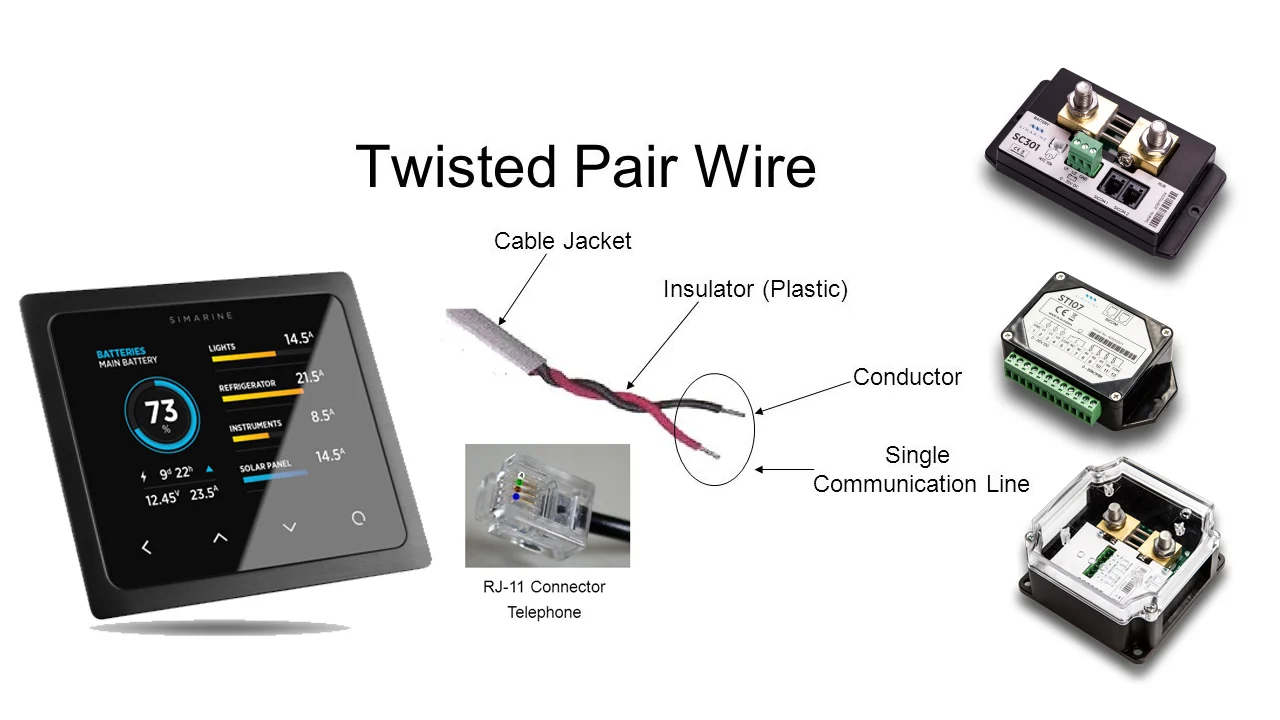
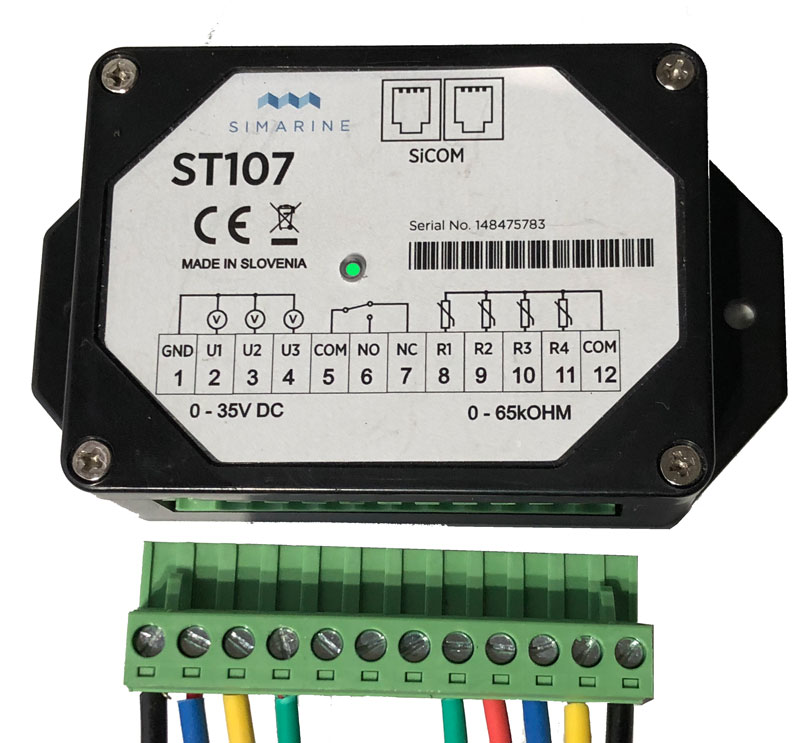
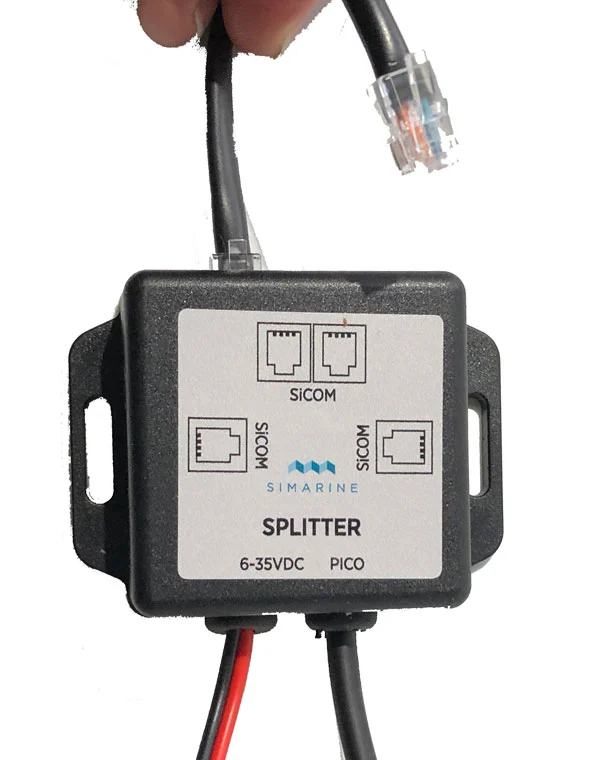
Installation time and cabling costs can hide the true cost of a system installed in a caravan or motorhome.
In manufacturing, costs are impacted by:
The good news is that SIMARINE listened to many manufacturers to get installation costs low.
The best news is the programing time:

SAFIERY UNIVERSITY
VOICE CONTROL + AI WIRELESS MESH NETWORKS

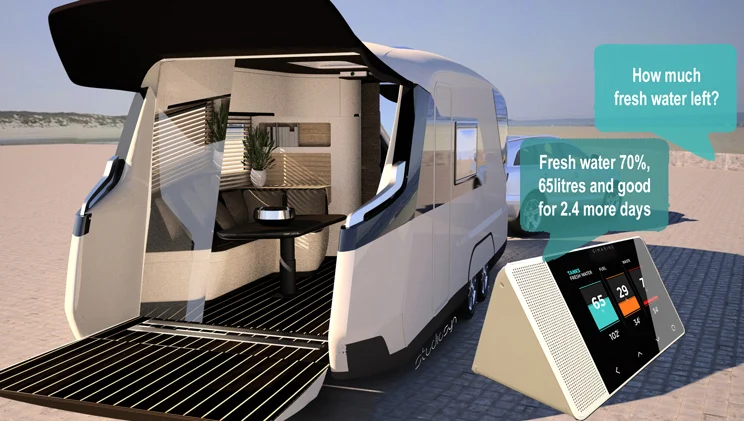


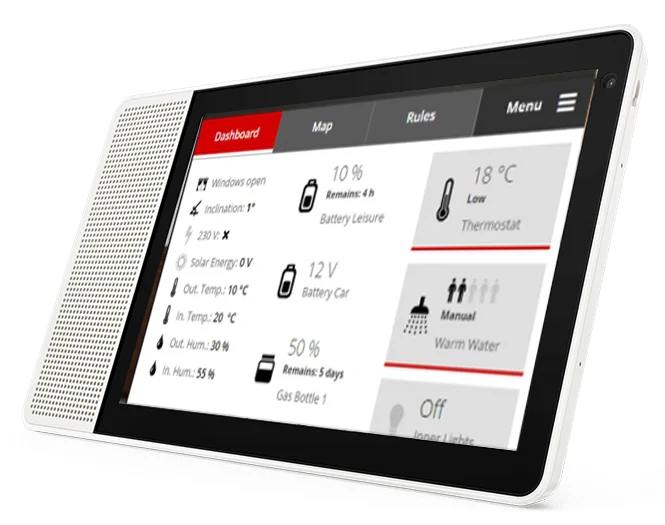
The fact that voice control is natural is the biggest factor favouring voice assistance. The second factor is the speed of communication. Voice commands are 3-4 times faster than keying in requests or searching. Digital devices and assistants can now react reliably to voice commands which means there is no need to learn keyboard and screen interfaces to control them.
However, the biggest benefit to Voice+AI in the RV and Marine industry is alarm management. With RV’s and boats, when an alarm occurs, Voice+AI can give you details on the alarm and the consequences without having to flip through pages in a manual. Here is a practical example: You have a low battery alarm just before bed time. The system will announce the alarm. It can then also let you know if you can comfortably get through the night before the solar system kicks in tomorrow. It doesn’t need the internet for that AI. You send a command back to turn off all non-essential devices and it confirms. You sleep well.
Effective Voice control and AI needs direct access to all the data and control devices. This is where the technology for RV’s in particular has been lacking. Its also not uncommon to see a new high-tech motor yacht with many separate systems: individual temperature controllers, TV controllers and light switches. For effective voice control, the technology underpinning communication and control has to be digital and affordable. IoT standards for secure communication has changed the face of affordable systems.
IoT devices used for switching water pumps, lights and heaters on and off are controlled wirelessly. This is not the type of “wireless system” used with a garage door. This is a secure mesh encrypted network that will continue to operate even without the controller. That’s right: the switch and the controlled devices talk directly to each other.
You do not need to have internet access for the AI to simplify your life. One of the bug bears of camping is the flood of insects at sunset. With voice+AI you give a simple command to turn outside lights on “with insect control”. The system will not only turn on the light but change the colour on RGBW LED strips to yellow to minimise insect impact. So easy to do.
The big advantage with Voice+AI is that the technology can be transparent. Large “control panels” are eliminated saving real estate and cost. Controllers can be out of the way. Voice control interfaces can be the small mushroom speaker type or the elegant speaker and 8in screen combo. This latter device will show you visually whats going on in concert with the voice. If you are connected to the internet, then youtube videos, maps and other resources can be pulled up.
Voice +AI can also work with smaller devices, like smart watches and other wearable tech, Making them controllable by voice eliminates the need for learning gestures or clicking through layers of menus to find the detail you want.
People are also getting used to controlling devices with voice, this means it no longer seems strange to talk to a computer. Here is the review rating of 73,822 reviewers of Google Home (all Voice). Thats pretty impressive.
Voice will also give you secure access, as voice biometrics are being adopted as a security measure. And talking to a voice assistant doesn’t have to mean giving up all your privacy, with microphone mute buttons on every device and privacy assured.
A 2017 survey* found that Americans are ready to embrace voice control, with an increasing number already using the feature.
According to the survey, 72% of Americans who have smart home products – controlled remotely by a smartphone, tablet, computer or by a separate automatic system within the home itself – want voice control. The survey also found that 48% of Americans with smart home products currently have voice control capability.
Younger generations are more likely to already have voice capability on their smart home products: Like most other things, Millennials (ages 18-34) are leading the voice control trend. 58 % of Millennials have smart home products and devices that already have voice control features. Compare this to 50% of Gen Xers (ages 35-54) and 26% of Baby Boomers (ages 55+).
Survey respondents believe voice control provides a more intuitive user experience and practicality: The most commonly cited benefits for using voice control among respondents were hands-free control at 30%, increased user-friendliness at 17% and flexibility in location at 14%.
Safiery is a technology company developing wireless control with VOICE+AI for caravans, boats, cabins and anywhere dependent on 12V or 24V battery power. This is a totally different application to “Smart Homes” where 240V power dominates and systems are connected to the internet.
Safiery has developed products with a Wifi interface that simplifies installation and control:
See our unboxing video on the new Lenovo Smart Display which is Google Assistant, Google Home, and Android Things all in one device PLUS it has an AI chip inside. These are the first 8in and 10in displays in Australia. They will be released in October 2018. They ca be setup with an iPhone or Android phone or device.
Safiery will release the full product range in September 2018. Sign up at Safiery.com to follow this exciting journey – deep innovation with the first of it’s kind in the world (commercially available).
*This survey was conducted online within the United States by Harris Poll on behalf of Coldwell Banker Real Estate and Vivint Smart Home from November 14-16 and from November 18-22, 2016 among 4,108 U.S. adults ages 18 and older, among which, 923 have any smart home products.
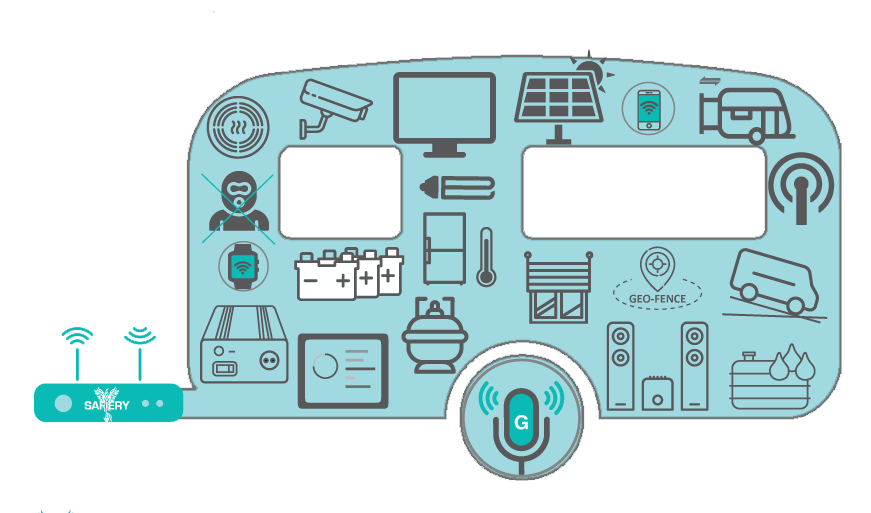
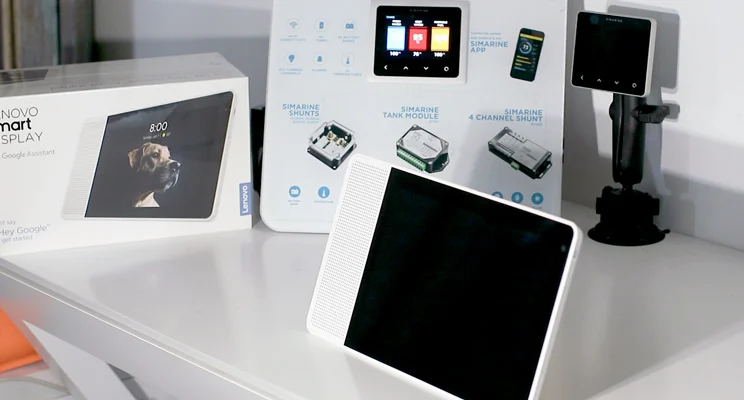

SAFIERY UNIVERSITY
IP STANDARDS SETTING ENVIROMENTAL REQUIREMENTS

This technical article summarizes IP ratings.
s = solids, l=liquids and i= impact (optional)
|
First Index – Foreign Bodies Protection, Solids |
||
| Index | Protection against Human/Tool Contact | Protection against solid objects (foreign bodies) |
| 0 | No special protection | |
| 1 | Back of hand, Fist | Large foreign bodies, diam. >50mm |
| 2 | Finger | Medium-sized foreign bodies, diam. >12 |
| 3 | Tools and wires etc with a thickness >2.5mm | Small foreign bodies, diam. >2.5mm |
| 4 | Tools and wires etc with a thickness >1mm | Granular foreign bodies, diam. >1mm |
| 5 | Complete protection, (limited ingress permitted) | Dust protected; dust deposits are permitted, but their volume must not affect the function of the unit. |
| 6 | Complete protection | Dust-proof |
|
Second Index – Water Protection, Liquids |
||
| Index | Protection against water | Protection from condition |
| 0 | No special protection | |
| 1 | Water dripping/falling vertically | Condensation/Light rain |
| 2 | Water sprayed at an angle (up to 15º degrees from the vertical) | Light rain with wind |
| 3 | Spray water (any direction up to 60º degrees from the vertical) | Heavy rainstorm |
| 4 | Spray water from all directions, (limited ingress permitted) | Splashing |
| 5 | Low pressure water jets from all directions, (limited ingress permitted) | Hose down, residential |
| 6 | High pressure jets from all directions, (limited ingress permitted) | Hose down, commercial. eg. Ship decks |
| 7 | Temporary immersion, 15 cm to 1m | Immersion in tank |
| 8 | Permanent Immersion, under pressure | For use on Titanic recovery vehicle |
|
Third Index – Impact Protection, Impact |
||
| Index | Protection against impact | Equivalent mass impact |
| 0 | No special protection | |
| 1 | Protected against 0.225J impact | eg. 150g weight falling from 15cm height |
| 2 | Protected against 0.375J impact | eg. 250g weight falling from 15cm height |
| 3 | Protected against 0.5J impact | eg. 250g weight falling from 20cm height |
| 4 | Protected against 2.0J impact | eg. 500g weight falling from 40cm height |
| 5 | Protected against 6.0J impact | eg. 0.61183kg weight falling from 1m height |
| 6 | Protected against 20.0J impact | eg. 2.0394kg weight falling from 1m height |

SAFIERY UNIVERSITY
TEMPERATURES KILL SHOCK ABSORBERS –
This technical article is designed to give value to the reader through more knowledge on the benefit of monitoring shcok absorber temperatures.
There is a great article by Matt Raudonics on a trek through the Canning Stock Route with a fleet of Mercedes G Wagons.

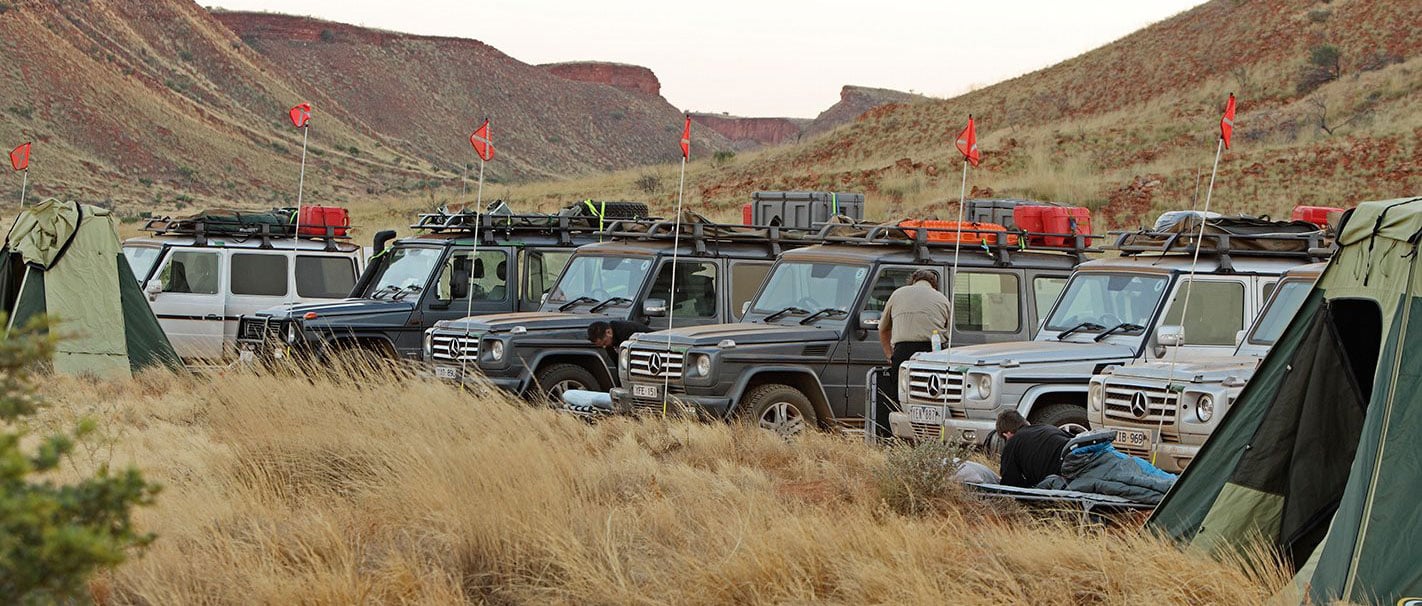
“Mercedes Benz had become the first vehicle manufacturer to take a convoy of standard vehicles up the 1600km of the Canning Stock Route, one of the harshest tracks in the country. There had been trials, tribulations and added expenses but all seven vehicles had made it on schedule.
The total damage toll ran to five tyres, four cracked wheel carriers, one rear view mirror knocked off and a few more damaged, two G 350s with non-operative airconditioning, two AdBlue tanks breaking their mounts, 10 shock absorbers and a cracked radiator hose from a reversing incident. “
The number that jumps off the page is “10 shock absorbers”.

When travelling over corrugations and difficult road/track terrain, significant energy is generatedin the shock absorbers and tyres. This increases the temperature of the tyres and shock absorbers.
The tyres and shock absorbers dissipate the heat. However, if more heat is being created than the tyres/ shock absorbers can dissipate, the oil in the shock absorber will over-heat causing the shock absorber to fail.
If the tyre sidewalls are generating too much heat, they can be vulnerable to failure too.
Over corrugations, the distance the shock absorber travels is very little. So the heat build up is concentrated. See the photo below of the “blue heat ring” on the shaft of the shock absorber caused by extreme temperature build up.
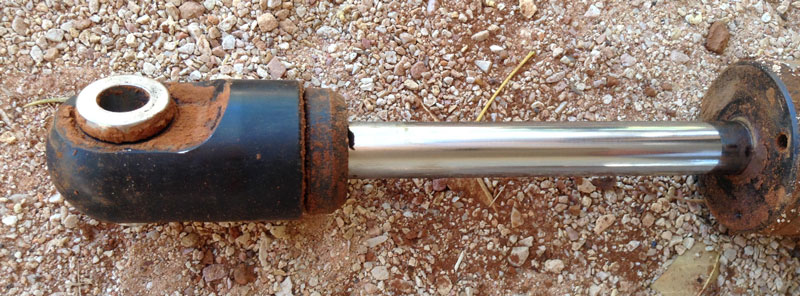
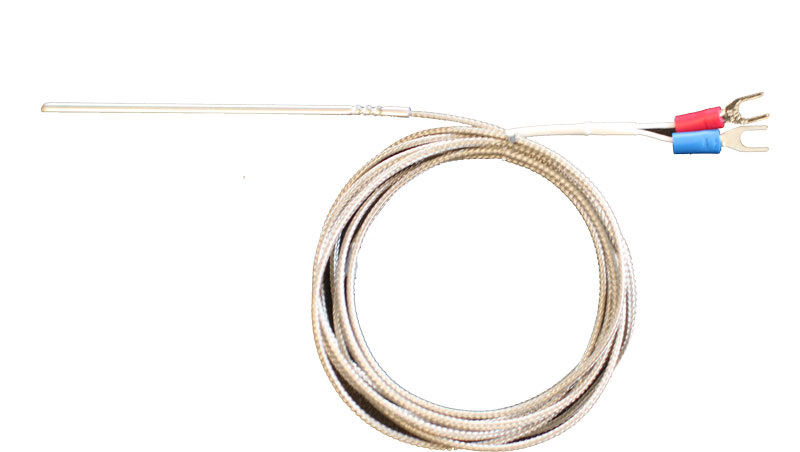
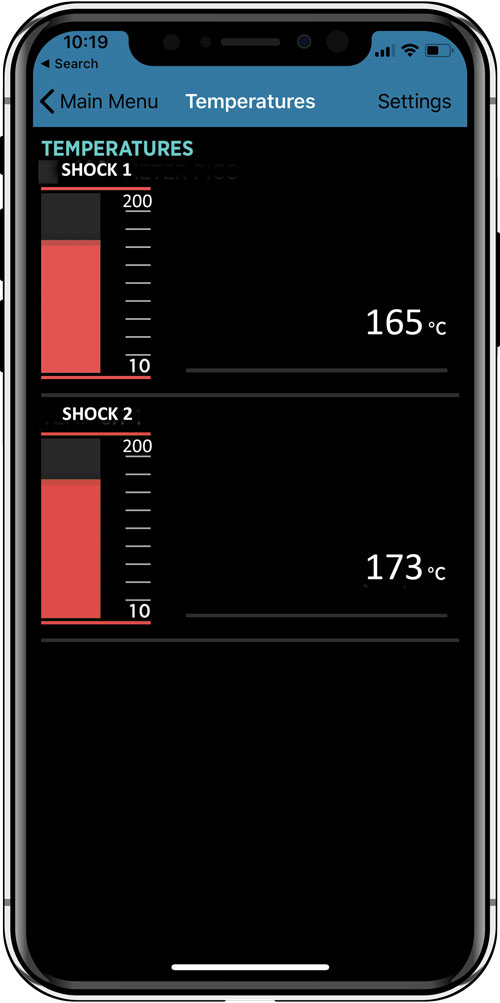
The design of the shock absorber is to efficiently dissipate this heat. If the heat build up is greater than the rate that the heat can dissipate, the shock absorber increases in temperature. If the temperature goes above 170C, even high temperature seals like “Viton®” will fail, the oil/nitrogen will dissipate, and the shock absorbers fail.
The simple way to prevent this is to monitor shock absorber temperature.

SAFIERY UNIVERSITY
HEALTHY ALARMS THREE TYPES of BATTERY ALARMS.

This technical article is designed to give value to the reader through more knowledge on alarm management.
Firstly, there are 3 different types of ALARMS:
Here are examples:

This ALARM sets the State Of Charge (SOC) level that will trigger an ALARM. For AGM Batteries, setting this at say 60% will give you time to adjust battery usage before you reach the 50% Depth of Discharge level.
This ALARM sets the Time to Discharge or Time to Go (TTG) hours that will trigger and ALARM. For your lifestyle, setting this at say 4 hours will give you time to adjust battery usage before you reach the critical voltage level of 20% SOC.
This type of alarm is really a “HEALTHY” Alert to you.

This ALARM sets the Voltage level that will trigger an ALARM.
For AGM Batteries, if there is a major current draw from an inverter, the voltage can drop while the inverter is operating and then bounce back once it is off.
Setting a control condition to turn the battery supply off based on battery voltage can be unwise in this situation. For this reason there is a “delay” that can be set in case the battery voltage recovers after a low condition.
However, in the end this is the condition to let you know that your battery condition is critical.
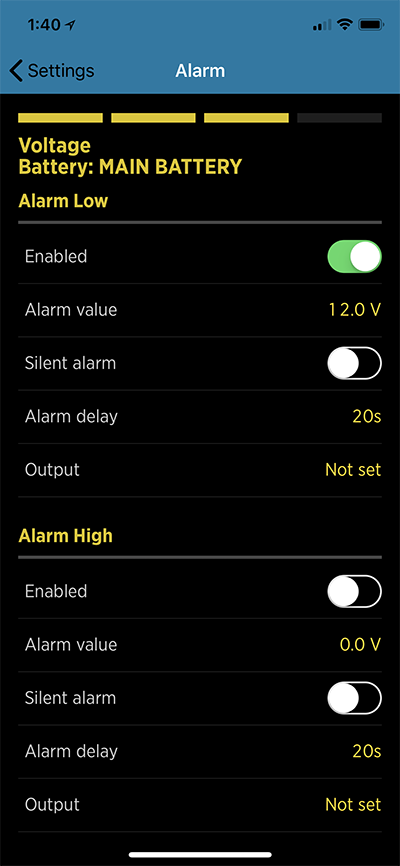
If you are charging your battery with a generator, it can be very helpfull to know when your batteries are full or nearly full. By setting the ALARM HIGH on the State of Charge to say 95% or even 100%, you can get an alert when this is reached.
This is more helpfull and reliable than the Battery Voltage. There is no guarantee based on the battery voltage alone that the batteries are fully charge. This is even more important with Lithium batteries.
The other type of Pre-condition Alarm can be generated using “geo-fencing” on a GPS connected COMMS-X device.
This device will also monitor your battery healthy, your geo-position and another alarm input like “AC Power has dropped out” or “intruder alarm”. This means that if you have your RV in Storage or your boat on shore power at a marine, you can monitor these events.
Screenshot appears below.

SCREENSHOT of Remote Monitoring Display on Phone:
Username or Email*
Password*
